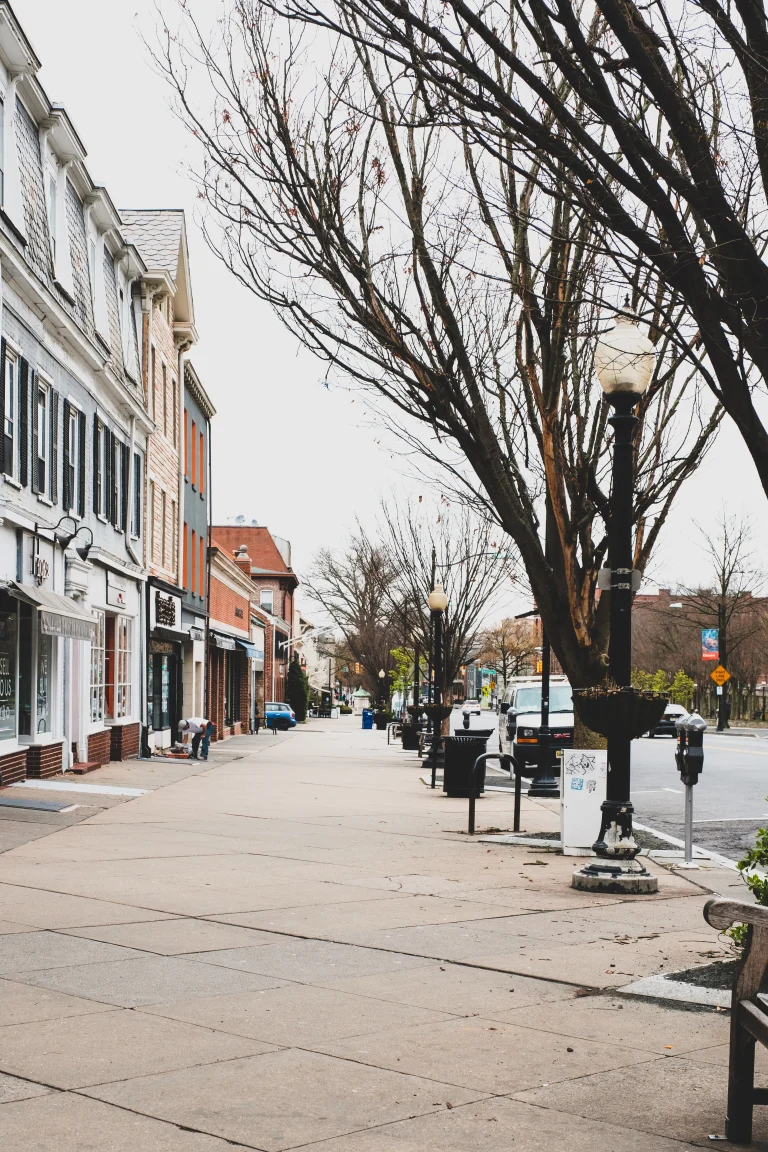Is Joliet A Suburb Of Chicago?
Whether Joliet should be considered a suburb of Chicago is an interesting question for those looking to understand the metropolitan geography of the Windy City. At first glance, with its distance of over 40 miles from downtown Chicago, Joliet may not seem like a typical suburb. However, when you consider commuting patterns, economic ties, and historical connections to Chicago, a case can be made that Joliet does function as part of Chicago’s broader suburban area.
If you’re short on time, here’s a quick answer: While not a typical inner-ring suburb, Joliet exhibits many characteristics of an outer-ring or exurban Chicago suburb. Its commuting ties, proximity, and economic relationship to Chicago make it reasonable to consider Joliet part of metro Chicago’s suburban area.
Defining Suburbs
When discussing whether Joliet is a suburb of Chicago, it is important to first understand what exactly defines a suburb. Traditionally, suburbs were residential areas located on the outskirts of a city, characterized by single-family homes, large yards, and a more relaxed pace of life compared to the bustling city center.
However, as cities have grown and evolved, so have their surrounding areas.
Traditional Suburban Characteristics
Traditionally, suburbs were seen as peaceful havens away from the noise and congestion of the city. They offered a sense of community and a quieter lifestyle, while still providing convenient access to urban amenities.
Suburbs typically featured well-maintained neighborhoods with parks, schools, and shopping centers nearby. These areas were often sought after by families looking for a safe and family-friendly environment to raise their children.
One example of a traditional suburban area near Chicago is Naperville. Located about 30 miles west of downtown, Naperville offers a mix of residential neighborhoods, top-rated schools, and a thriving downtown area.
It has often been hailed as one of the best places to live in the United States, attracting families and professionals seeking a suburban lifestyle with easy access to the city.
Newer Views of Suburban Areas
In recent years, the concept of suburbs has evolved to include a wider range of characteristics. Many suburban areas, including Joliet, have experienced significant population and economic growth, blurring the lines between urban and suburban living.
While Joliet is technically located outside of the city limits of Chicago, its proximity and strong economic ties make it an important part of the Chicago metropolitan area.
Joliet, located southwest of Chicago, has a population of over 150,000 and is the fourth-largest city in Illinois. It offers a mix of residential, commercial, and industrial areas, with a diverse range of neighborhoods.
Joliet is known for its historic charm, with beautiful architecture and a rich history that dates back to the 19th century.
As with many suburbs, Joliet provides residents with a balance of suburban amenities and urban conveniences. It has its own downtown area with shops, restaurants, and entertainment options, as well as easy access to the cultural attractions and job opportunities in Chicago.
While the debate of whether Joliet is a suburb of Chicago may continue, it is clear that the city shares many characteristics with traditional suburbs, as well as the evolving nature of newer suburban areas.
Whether you consider Joliet a suburb or not, it is an important and vibrant part of the greater Chicago metropolitan area.
Joliet’s Distance from Chicago
When considering whether Joliet is a suburb of Chicago, one of the first factors to consider is the distance between the two cities. Joliet is located over 40 miles from downtown Chicago, making it a significant distance away.
This distance can impact the commuting time and accessibility to the city for Joliet residents.
Located Over 40 Miles from Downtown
Joliet is situated around 40 miles southwest of downtown Chicago. This distance means that traveling between the two cities can take a considerable amount of time, especially during rush hour. Commuters from Joliet to Chicago often face heavy traffic on the highways, which can result in longer travel times.
However, despite this distance, Joliet still maintains its identity as a separate city with its own unique characteristics and amenities.
Farther Out Than Many Suburbs
Compared to many other suburbs surrounding Chicago, Joliet is located farther out from the city center. While some suburbs are just a few miles away from downtown, Joliet’s distance makes it feel more like a separate entity.
This distance has allowed Joliet to develop its own local economy, culture, and community, distinct from the hustle and bustle of downtown Chicago.
But Within Metro Area
Despite its distance, Joliet is still considered part of the Chicago metropolitan area. This means that it is included in the larger region that encompasses the city and its surrounding suburbs. Joliet benefits from being part of this metropolitan area, as it allows residents to access the resources and opportunities available in a major city while still enjoying the perks of a smaller community.
Commuting Ties to Chicago
As a suburb located just 40 miles southwest of Chicago, Joliet has strong commuting ties to the city. Many residents of Joliet choose to commute to Chicago for work, taking advantage of the employment opportunities and cultural offerings that the city has to offer.
Many Residents Commute to Chicago
A significant portion of Joliet’s population commutes to Chicago on a daily basis. This is due to the proximity of the two areas and the availability of various modes of transportation. Whether it’s driving, taking the train, or carpooling with coworkers, Joliet residents have several options for commuting to Chicago.
In fact, according to recent statistics, around 30% of Joliet’s workforce commutes to Chicago for employment. This highlights the strong commuting ties between the two areas and the economic interdependence between Joliet and Chicago.
Part of Chicago’s Commutershed
Joliet is considered part of Chicago’s commutershed, which refers to the geographic area from which people commute to the city for work. This commutershed extends beyond the city limits and includes surrounding suburbs like Joliet.
Being part of Chicago’s commutershed has its advantages for Joliet residents. They have access to a wider range of job opportunities in Chicago and can benefit from the city’s robust economy and diverse industries.
Additionally, commuting to Chicago allows Joliet residents to enjoy the amenities and cultural experiences that the city has to offer while still living in a more suburban setting.
Easy Highway Accessibility
Joliet’s easy highway accessibility is another factor that contributes to its commuting ties with Chicago. The city is strategically located near major highways, including Interstate 55 and Interstate 80, making it convenient for residents to commute to and from Chicago.
The well-maintained highways provide a smooth and efficient commute, allowing Joliet residents to reach downtown Chicago or other parts of the city in a reasonable amount of time. This accessibility makes Joliet an attractive option for those who want to live in a suburban area while working in the bustling city.
Economic Relationship to Chicago
When it comes to the economic relationship between Joliet and Chicago, it is clear that the two cities are closely intertwined. Chicago, being a major economic hub in the Midwest, drives the regional economy and has a significant impact on the surrounding areas, including Joliet.
Chicago Drives Regional Economy
As the third-largest city in the United States, Chicago boasts a diverse and robust economy. Its industries range from finance and technology to manufacturing and transportation. The city’s position as a global business center attracts companies from around the world, creating a thriving economic ecosystem.
With its proximity to Chicago, Joliet benefits greatly from this economic powerhouse. Many businesses in Joliet rely on Chicago for their supply chains, distribution networks, and customer base. The strong ties between the two cities contribute to the overall economic growth and prosperity of the region.
Joliet Firms Rely on Chicago
Joliet is home to a number of industries, including manufacturing, logistics, and healthcare. These sectors play a crucial role in the local economy, providing jobs and driving economic activity. However, many of these firms depend on Chicago for their success.
For instance, manufacturing companies in Joliet often rely on Chicago for the procurement of raw materials and components. The city’s well-established transportation infrastructure, including highways, railroads, and airports, makes it easier for businesses in Joliet to import and export goods.
Additionally, the proximity to Chicago’s large consumer market allows Joliet-based companies to reach a wider customer base.
Shared Labor Pool
Another important aspect of the economic relationship between Joliet and Chicago is the shared labor pool. Many residents of Joliet commute to Chicago for work, taking advantage of the job opportunities available in the city.
Likewise, Chicago residents may choose to work in Joliet, especially in industries like healthcare and logistics.
This interconnectivity between the two cities allows for a more efficient allocation of human resources and fosters collaboration between businesses. It also provides individuals with a broader range of employment options, enhancing economic mobility in the region.
Historic Development Patterns
Joliet, located in Illinois, has a rich history of development that has shaped its identity as a city. Understanding the historic development patterns of Joliet provides insight into its relationship with Chicago and whether it can be considered a suburb of the larger city.
Early Rail Connections to Chicago
In the 19th century, Joliet’s development was heavily influenced by its strategic location along the Des Plaines River and its early rail connections to Chicago. The construction of the Illinois and Michigan Canal in the 1830s spurred economic growth in the area, attracting industries and settlers.
The canal provided a vital link between the Great Lakes and the Mississippi River, making Joliet an important transportation hub.
The expansion of the railroad network in the late 19th and early 20th centuries further strengthened Joliet’s ties to Chicago. The city became a major rail center, with multiple lines connecting it to the larger metropolis.
This allowed for the efficient transportation of goods and people between Joliet and Chicago, facilitating economic development and population growth.
Postwar Suburban Growth
After World War II, Joliet experienced a significant period of suburban growth, mirroring trends seen across the United States. The expansion of highways and the availability of affordable housing attracted families looking to escape the crowded city centers.
Joliet’s proximity to Chicago, combined with its lower cost of living, made it an appealing option for those seeking a suburban lifestyle.
During this period, Joliet saw the development of numerous residential neighborhoods and the establishment of shopping centers, schools, and other amenities. The population of Joliet grew rapidly, transforming it from a small industrial town to a thriving suburban community.
Ongoing Expansion
In recent years, Joliet has continued to expand and evolve. The city has seen ongoing development in various sectors, including manufacturing, logistics, and healthcare. Its proximity to major transportation routes, such as Interstates 55 and 80, has made it an attractive location for businesses looking to establish a presence in the Chicago metropolitan area.
While Joliet has experienced substantial growth and development, it is important to note that it retains its own unique identity as a separate city. While it is undeniably influenced by its proximity to Chicago, Joliet has distinct characteristics and a rich history that sets it apart.
Conclusion
In summary, while Joliet lies farther from Chicago’s urban core than many metro region suburbs, its commuting patterns, economic ties, transportation connections, and history of growth as part of the broader region make it reasonable to consider Joliet as part of Chicago’s extended suburban area. However, Joliet has also established itself as an independent city with many characteristics that set it apart from closer-in Chicago communities. Understanding Joliet’s complex relationship to Chicago provides insight into the evolving suburban geography of one of America’s great metropolitan regions.








